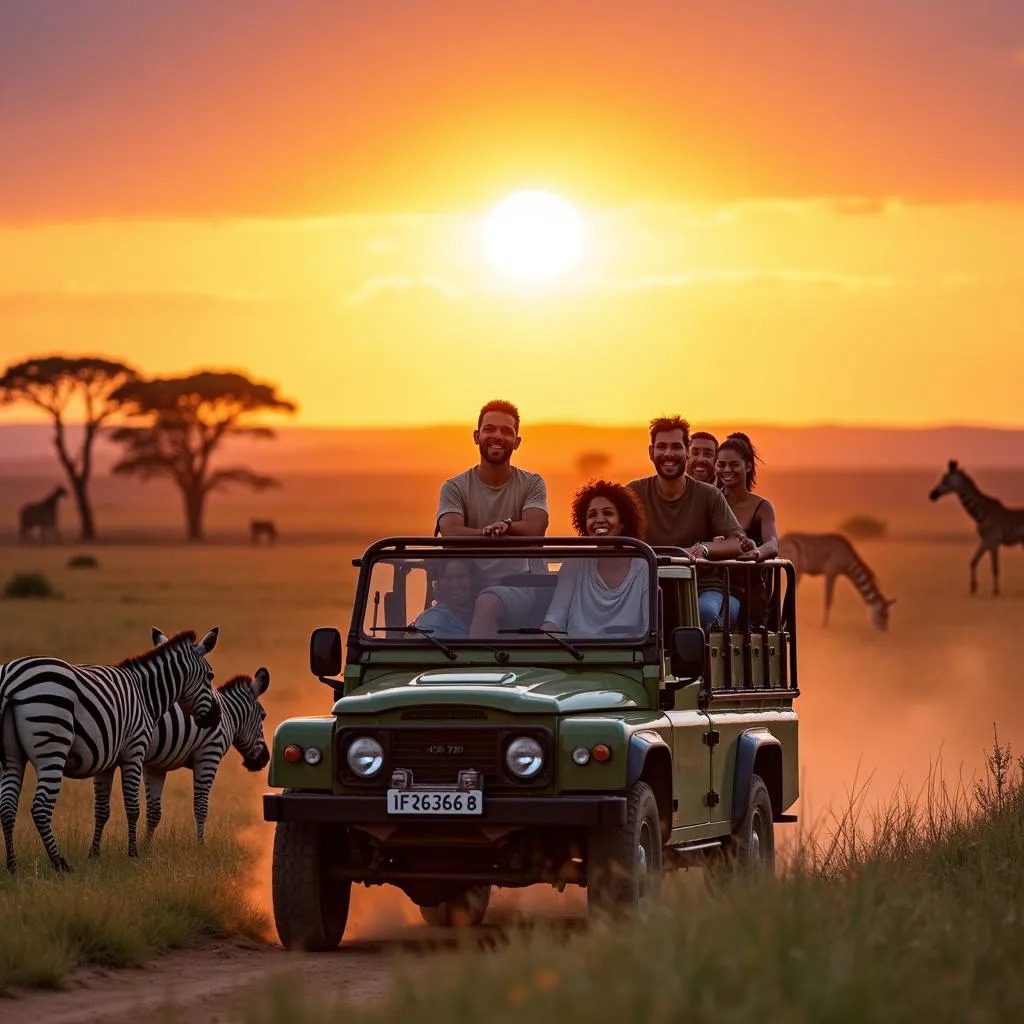African Animals Lesson Plans: Engaging Activities for Your Classroom
Learning about African animals can be an exciting adventure for students of all ages. These captivating creatures offer a window into diverse ecosystems, unique adaptations, and fascinating behaviors. This article explores various lesson plans and activities to bring the wonders of African wildlife into your classroom.
Exploring the Savanna: A Lesson Plan
This engaging lesson plan focuses on the African savanna, its diverse animal inhabitants, and their unique adaptations.
Objectives
- Students will identify the key characteristics of a savanna ecosystem.
- Students will identify and describe the adaptations of five different savanna animals.
- Students will create their own “savanna animal” with specific adaptations for survival.
Materials
- Pictures or illustrations of savanna animals (lions, elephants, giraffes, zebras, etc.)
- Large paper or poster board
- Markers, crayons, or colored pencils
- Chart paper or whiteboard
Procedure
- Introduction: Begin by introducing the African savanna, emphasizing its unique climate, vegetation, and animal diversity.
- Animal Adaptations: Show pictures of different savanna animals and discuss their adaptations for survival. For example, elephants use their trunks for drinking water and reaching leaves, while lions have powerful claws for hunting.
- Creating a Savanna Animal: Have students work in pairs or small groups to design their own savanna animal. They should consider its specific adaptations for survival, including diet, movement, and defense mechanisms. Encourage students to use their imaginations and create unique creatures.
- Presentation: Allow each group to present their animal and explain its adaptations. Discuss the importance of these adaptations for the animal’s survival in the savanna ecosystem.
“Animal Olympics”: Learning about Animal Adaptations
This fun activity allows students to learn about animal adaptations through a playful competition.
Objectives
- Students will identify the adaptations of various African animals.
- Students will understand how these adaptations help animals survive in different environments.
- Students will engage in active learning through role-play and movement.
Materials
- Pictures or illustrations of various African animals (lions, cheetahs, giraffes, ostriches, etc.)
- Large paper or poster board
- Markers, crayons, or colored pencils
- A designated space for the activity
Procedure
- Introduction: Introduce the concept of “Animal Olympics” and explain that each animal is competing based on its unique adaptations.
- Choosing Animals: Divide the class into groups and have each group choose an African animal.
- Adaptation Games: Create a series of games that reflect different animal adaptations. For example:
- Cheetah Race: Students run a short distance, simulating the cheetah’s speed.
- Giraffe Neck Stretch: Students stand tall and stretch their arms high, mimicking a giraffe’s neck length.
- Elephant Trunk Challenge: Students use their hands to pick up objects (like small toys or balls) to simulate the elephant’s trunk.
- Winner’s Circle: Award points for each game based on the animal’s adaptation. The group with the highest points at the end “wins” the Animal Olympics.
“Expert Insight”: A Word From the Animal Kingdom
“Adaptation is essential for survival in the diverse ecosystems of Africa,” shares Dr. Jane Obo, renowned wildlife biologist. “From the sharp claws of lions to the long necks of giraffes, each animal has evolved unique features to thrive in their environment.”
African Animal Habitats: A Classroom Exploration
This lesson explores the different habitats of African animals and the unique features that define each environment.
Objectives
- Students will identify different African habitats, including the savanna, rainforest, and desert.
- Students will list the key features of each habitat.
- Students will create a visual representation of an African habitat.
Materials
- Pictures or illustrations of various African habitats
- Large paper or poster board
- Markers, crayons, or colored pencils
- Chart paper or whiteboard
- Construction paper (optional)
- Scissors (optional)
- Glue (optional)
Procedure
- Introduction: Introduce the concept of habitats and their importance for different animals.
- Habitat Exploration: Show pictures of different African habitats, such as the savanna, rainforest, and desert. Discuss the unique characteristics of each habitat, including climate, vegetation, and animal life.
- Creating a Habitat: Have students work in groups to create a visual representation of their chosen habitat. Encourage them to use construction paper, scissors, and glue to create a model of their habitat.
- Habitat Presentation: Have each group present their habitat and explain its unique features. Discuss the importance of these habitats for supporting diverse animal life.
“Animal Soundscapes”: Bringing the Sounds of Africa to Life
This activity focuses on the sounds of African animals and their importance in communication and survival.
Objectives
- Students will identify the sounds of different African animals.
- Students will understand the role of sounds in animal communication.
- Students will engage in creative and auditory learning experiences.
Materials
- Audio recordings of African animal sounds (lions roaring, elephants trumpeting, birds singing, etc.)
- Paper and pencils for note-taking
- Sound recording devices (optional)
Procedure
- Introduction: Introduce the concept of animal communication and the role of sounds in this process.
- Sound Exploration: Play different audio recordings of African animal sounds, encouraging students to identify the animals and discuss the sounds they hear.
- Sound Creation: Have students imitate the sounds of different animals, either individually or in groups. Encourage them to explore the different vocalizations and sounds these animals make.
- Sound Scavenger Hunt: (optional) Have students create their own sound scavenger hunt, searching for sounds in the environment that resemble African animal sounds.
“Animal Adaptations in Action”: Insights from Dr. Kofi Kwame
“Animals have evolved incredible ways to communicate through sound,” notes Dr. Kofi Kwame, a renowned animal behavior specialist. “From warning calls to attract mates, sounds play a crucial role in the survival of many African animals.”
Conclusion
By exploring the fascinating world of African animals, students can develop a deeper appreciation for biodiversity and learn about the interconnectedness of life on Earth. These lesson plans and activities encourage engagement, curiosity, and a love for the natural world.
FAQs
- What are some common African animal adaptations?
- Camouflage: Many animals, like the leopard, have patterns on their fur that help them blend into their environment.
- Speed: Cheetahs are known for their incredible speed, which helps them catch prey.
- Strength: Elephants have massive bodies and powerful muscles that enable them to move large objects and defend themselves.
- How can I teach about endangered African animals?
- Discuss the threats facing these animals, including habitat loss, poaching, and climate change.
- Encourage students to research conservation efforts and learn how they can contribute to protecting endangered species.
- What are some online resources for learning about African animals?
- National Geographic Kids
- WWF (World Wildlife Fund)
- The African Wildlife Foundation
- Can I incorporate technology into my lesson plans?
- Use virtual reality tours of African wildlife parks.
- Play interactive games on animal adaptations.
- Create videos or slideshows showcasing African animals and their habitats.
- What are some fun ways to celebrate African animal diversity?
- Organize a “Wear Your Favorite African Animal” day.
- Host an “African Animal Art Contest.”
- Have students research and present information about their favorite African animal.
Additional Ideas
- Create a “Savanna Ecosystem” diorama.
- Have students write a story from the perspective of an African animal.
- Research and compare the diets of different African animals.
- Explore the impact of human activity on African wildlife.
Call to Action
Ready to embark on an African animal adventure with your students? We can help! Our team of experts can provide you with tailored lesson plans, activity guides, and engaging resources. Contact us today to make your classroom a vibrant hub for African wildlife learning.
Contact us: +255768904061, kaka.mag@gmail.com
Mbarali DC Mawindi, Kangaga, Tanzania.
We are available 24/7 to assist you.


